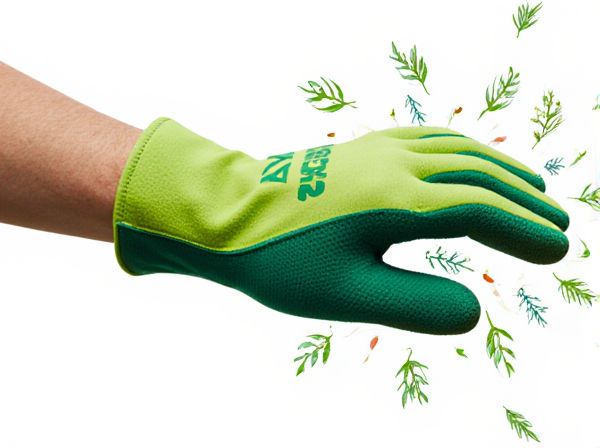
Season extension vs Season shortening Illustration
Season extension techniques improve crop yields by creating favorable growing conditions beyond natural limits, such as using greenhouses or row covers to protect against frost. In contrast, season shortening results from climate change impacts like rising temperatures and altered precipitation patterns, leading to earlier plant senescence and reduced growing periods. Understanding these dynamics is crucial for adapting agricultural practices to ensure food security in shifting climatic conditions.
Table of Comparison
| Aspect | Season Extension | Season Shortening |
|---|---|---|
| Definition | Extending the duration of a climate season | Reducing the length of a climate season |
| Causes | Warming temperatures, delayed frost | Rapid temperature shifts, early frost |
| Impact on Ecosystems | Longer growing periods, altered species cycles | Shorter growth windows, stress on flora and fauna |
| Effect on Agriculture | Potential for increased yields and multiple harvests | Reduced crop viability and lower yields |
| Climate Indicators | Rising average temperatures, extended warm periods | Earlier temperature drops, increased frost events |
| Examples | Longer summers in temperate zones | Shortened winters in polar regions |
Understanding Season Extension and Season Shortening in Gardening
Season extension in gardening involves techniques such as using row covers, cold frames, and hoop houses to protect plants from frost, allowing growers to start planting earlier and harvest later, thereby maximizing the growing period. Season shortening occurs when climate change leads to unpredictable weather patterns, causing earlier frosts or prolonged droughts that reduce the effective growing season, impacting crop yields negatively. Understanding these phenomena is essential for adapting gardening strategies to maintain plant health and productivity amid changing climatic conditions.
Key Climate Factors Influencing Growing Seasons
Temperature fluctuations and precipitation patterns are primary climate factors influencing the extension or shortening of growing seasons. Increased average temperatures can lead to earlier spring blooms and later fall frosts, effectively extending the growing season length. Conversely, unpredictable weather extremes and prolonged droughts may shorten the growing season by stressing plant health and reducing viable growing periods.
Pros and Cons of Extending the Gardening Season
Extending the gardening season allows for increased crop yields and greater plant diversity by enabling earlier planting and later harvesting, which maximizes sunlight and temperature benefits. However, this practice can require higher energy consumption for heating and additional water usage, potentially increasing environmental footprints. Gardeners must also manage the increased risk of pests and diseases that thrive in prolonged growing conditions.
Techniques for Effective Season Extension
Techniques for effective season extension include the use of high tunnels, row covers, and cold frames to protect crops from frost and low temperatures, extending growing periods by several weeks. Implementing soil warming methods like black plastic mulch and using windbreaks can further stabilize microclimates, promoting plant growth during off-season months. Advanced irrigation systems combined with precise temperature monitoring optimize water use and help maintain ideal conditions for crop development beyond traditional growing seasons.
Strategies for Managing Season Shortening
Managing season shortening due to climate change involves implementing adaptive agricultural practices such as selecting crop varieties with shorter growing periods and altering planting schedules to maximize yield within reduced timeframes. Enhancing microclimate conditions through techniques like soil moisture retention, use of shade nets, and windbreaks helps mitigate harsh weather impacts and prolong productive phases. Advanced forecasting tools enable precise timing of farming operations, ensuring optimal resource use and minimizing risks associated with unpredictable weather patterns.
Impact of Climate Change on Garden Season Length
Rising global temperatures due to climate change have led to season extension in many regions, allowing longer growing periods for gardens and crops. This shift often results in earlier springs and later autumns, increasing the risk of pest infestations and affecting plant hardiness. However, some areas experience season shortening due to unpredictable weather patterns and extreme climate events, disrupting traditional gardening cycles and crop yields.
Choosing the Right Crops for Variable Growing Seasons
Selecting crop varieties resilient to temperature fluctuations and unpredictable rainfall is essential for maximizing yields amid season extension or shortening due to climate variability. Early-maturing crops and drought-tolerant species offer adaptability to shortened growing periods, while longer-season crops benefit from extended warmth and increased CO2 levels. Integrating phenological data with regional climate models enables optimized planting schedules that align crop selection with shifting seasonal patterns.
Tools and Technologies for Season Management
Advanced climate control tools such as precision irrigation systems and automated shading technologies enable season extension by optimizing growing conditions beyond natural limits. Conversely, real-time climate monitoring sensors combined with predictive analytics facilitate proactive season shortening to protect crops from adverse weather events. These technologies empower farmers to dynamically manage growing seasons, balancing yield maximization with environmental risk mitigation.
Balancing Year-Round Production with Sustainability
Season extension techniques such as controlled environment agriculture and the use of high tunnels enable year-round crop production while minimizing resource inputs and reducing carbon footprints. In contrast, season shortening through crop rotation and selective planting reduces water and energy usage but may limit total annual yields. Achieving a balance between extending and shortening growing seasons supports sustainable agriculture by optimizing productivity and conserving environmental resources.
Planning Your Garden Calendar for Shifting Seasons
Shifting seasons demand strategic planning of your garden calendar to optimize growing periods affected by season extension or shortening. Season extension techniques, such as using row covers or cold frames, enable earlier planting and delayed harvests, maximizing crop yield despite climate variability. Conversely, season shortening requires selecting fast-maturing or heat-tolerant plant varieties to adapt to warmer temperatures and unpredictable frost dates, ensuring productivity remains high.
Season extension vs Season shortening Infographic

 gardendif.com
gardendif.com